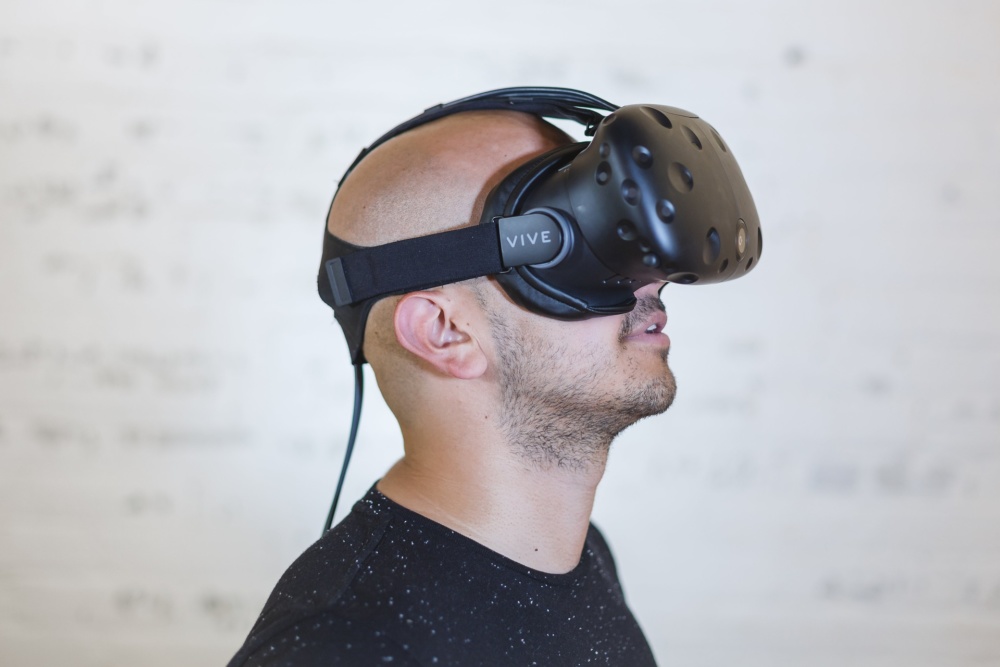Virtual Reality: Does it Work for Physical Therapy?
Like clockwork, every year the big ball drops in Times Square at midnight on New Year’s Eve. With the same regularity, millions of people who have added a few (or more) pounds during the holiday season resolve to lose this excess weight by starting a regular diet and exercise program. As a result, health clubs are extremely popular places in the first quarter of every year. However, something happens after about three months. Boredom sets in, and the numbers of people working out decreases, dramatically.
The health club industry, estimated to be a $27.6 billion business category in the United States, has taken notice of this annual trend, which is driven by boredom. It has started looking for ways to reduce the monotony and keep customers coming to the gym every day, year round. One strategy that is receiving a great deal of media attention is the use of virtual reality (VR) software to spice up workouts.
According to a Wall Street Journal article entitled “Working up a Real Sweat with VR,” commercial health clubs have been dabbling in the use of technology to enhance exercise for some time. “Gyms have long sought to distract members from the monotony and rigor of exercise with digital entertainment, from small TV screens mounted on workout machines to movie theater-like spaces for large groups. But some fitness gurus and academics say virtual reality does a better job of keeping gym-goers engaged.
“With headsets on, users only see the digital world. In Fruit Ninja VR, users swing their arms to slice flying fruit and may need to squat or reach up to succeed. Users throw chairs and darts—or duck to avoid getting hit—in Drunken Bar Fight. And when a headset is synced to a resistance machine being developed by Black Box VR, users defend a base from attackers while playing the Idaho startup’s battle game VR Fitness Revolution.”
If this technology can reduce the boredom of a traditional workout, it begs the question about a medical application.
Can VR Reduce the Boredom and Enhance the Effectiveness of Physical Therapy
For the past (number) of years, Jason Brewton has been the director of physical therapy (PT) at Texas Back Institute and he has helped thousands of patients regain their strength and flexibility. As an expert on PT, Brewton’s insights about the use of virtual reality in a medical setting are thought-provoking.
“I think VR definitely has a significant place in the fitness sector,” he said. “The biggest advantage of VR is its ability to place people in a multitude of environmental settings and situations without the inconvenience and cost of physically going to those locations or logistically setting up a competitive group environment. This can reduce boredom and entice those who are less athletically inclined to explore the VR activities that they would not otherwise try.
“One of the largest barriers to traditional fitness (in a health club setting) is convenience. VR may alleviate some of these pitfalls of traditional gyms and exercise classes where there are limitations on time and location.”
Do these benefits transfer to a medically based program of physical therapy?
“The possible benefits of using VR in different physical therapy settings are currently being explored in research. The big question for orthopedic and neurological-based physical therapy applications is do VR based therapy activities translate to real-world improvements?
“Research has yet to provide a definitive answer to this question. To date, systematic reviews of VR research have found that existing research is limited by small sample size and poorly controlled study design. I expect that stronger studies with larger sample sizes and good controls will emerge in the future, which will provide a clearer picture of VR’s place in rehabilitation.
“Since physical therapy has an ‘at-home’ component, a potential drawback for patients using VR in the clinic is translating this into a home exercise program. The patient may not have access to VR at home and if they do, the consumer- based models are not likely advanced enough to encourage therapeutically beneficial movements.
“In order for VR to translate to actual ‘real world’ movements, the VR system would require accurate, real-time input from the trunk and limbs of the patient. This means the VR system would need to be robust enough to track this data in an accurate manner and translate their positions into the VR world.”
Virtual Reality and Dizziness in a PT Setting
Some of the media reports note the potential for dizziness when the VR app is used longer than 30 minutes. Is this a concern for its use in a PT environment?
“There is significant concern for the potential of VR sickness as a side effect when using VR as a treatment,” Brewton said. “VR sickness, in the form of dizziness or nausea, occurs when augmented visual input or stimuli from the VR device conflicts with the “real” somatosensory system (musculoskeletal data) and vestibular (inner ear) input of positional data. When this input does not match up in the brain, it can result in VR sickness.
“This is similar to motion sickness experienced in a car. If this were to occur during rehabilitation, it could undermine the treatment itself and/or create an unsafe treatment environment.
Overcoming the Monotony of Physical Therapy
One of the reasons for using this interactive tool is to make a very boring exercise or workout regimen more interesting. Some have suggested that patients who are undergoing physical therapy also get bored with the process and often fail to finish their prescribed therapy. Could this VR enhanced therapy keep PT patients more engaged in their therapy?
“The majority of the time when patients state that they failed to finish their prescribed therapy because they got bored, it is the fault of the therapist for not challenging or progressing activities in a meaningful way. The therapy must also be relevant to the patient. If I went to therapy and did the same activities over and over without change I would get bored as well.
“VR has a certain ‘cool’ factor because it is a novel technology. This technology will likely appeal more to the younger generations than to less techno-savvy generations. Like any new technology, it has the potential to lose its novelty and become boring, just like a video game and movies that are played repeatedly or not updated constantly. Ultimately, it is the responsibility of the physical therapist to provide a safe, dynamic and challenging therapeutic environment.”
About the Author:
Over the past 35 years, Art Young has interviewed some of the most interesting people in the world and used these conversations to develop a diverse catalog of compelling stories. He is a writer, blogger, podcaster, broadcaster and frequent speaker on subjects ranging from technology to healthcare to music to outdoor sports and too many other subjects to mention. If content is king, then Art Young must be his strongest emissary.







Recent Comments